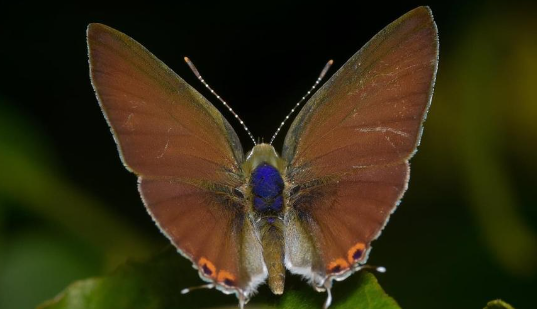Rare Butterfly Hosts on Terrestrial Orchid in Nilgiris
In October 2024, butterfly enthusiasts in the Nilgiris made an important discovery. They recorded the Nilgiri tit (Hypolycaena nilgirica) using a terrestrial orchid as a host for the first time in India. This finding is crucial for the conservation of this rare butterfly, which is listed under Schedule II of the Wildlife Protection Act. The study was conducted near Kallar horticultural garden and published in The Tropical Lepidoptera.
About the Nilgiri Tit
The Nilgiri tit is an endemic butterfly species first described in 1884. It is native to the Nilgiris and has also been observed in Sri Lanka. Historically, it was only recorded in limited areas, particularly the foothills of the Nilgiris.
Historical Observations
Until the late 1980s, the Nilgiri tit was mainly noted by researchers Wynter-Blyth in 1944 and Larsen in 1987. Since then, sightings have increased across various regions of the Western Ghats. Locations include the Geddai slopes in Nilgiris, Aiyannar Falls in Virudhunagar, Anamalais in Coimbatore, and Kalakkad Mundanthurai Tiger Reserve. Additionally, it has been spotted in Chinnar Wildlife Sanctuary and Silent Valley National Park in Kerala.
Discovery of the Larval Host Plant
A recent study revealed that the Nilgiri tit lays its eggs on the inflorescence of Eulophia epidendraea, a specific terrestrial orchid. This is the first documented instance of the butterfly using this plant as a host.
Characteristics of Eulophia Epidendraea
Eulophia epidendraea grows on rocky slopes in humid areas. In the study area, it thrives alongside grasses like Cymbopogon flexuosus, Chrysopogon nodulibarbis, and Melinis repens. This relationship is vital for the butterfly’s lifecycle.
Role of the Wynter-Blyth Association
The Wynter-Blyth Association has played a key role in this research. They have documented the larval host plant and its habitat. This documentation enhances knowledge about the Nilgiri tit’s lifecycle and habitat requirements.
Importance of the Discovery
This discovery is for conservation efforts. Identifying the larval host plant provides vital information about the butterfly’s ecology. It also marks the need to protect the specific habitats where these plants grow.
Future Conservation Studies
The Wynter-Blyth Association believes this finding will lead to further conservation studies. It will help to protect not just the Nilgiri tit but also its associated flora and fauna. The ecological relationships within this habitat is crucial for biodiversity conservation.
The documentation of the Nilgiri tit using Eulophia epidendraea as a host plant marks a pivotal moment in butterfly research in India. It underscores the importance of ongoing studies and conservation efforts in the Nilgiris and surrounding regions.
Month: Current Affairs - October, 2024
Category: Science & Technology Current Affairs








